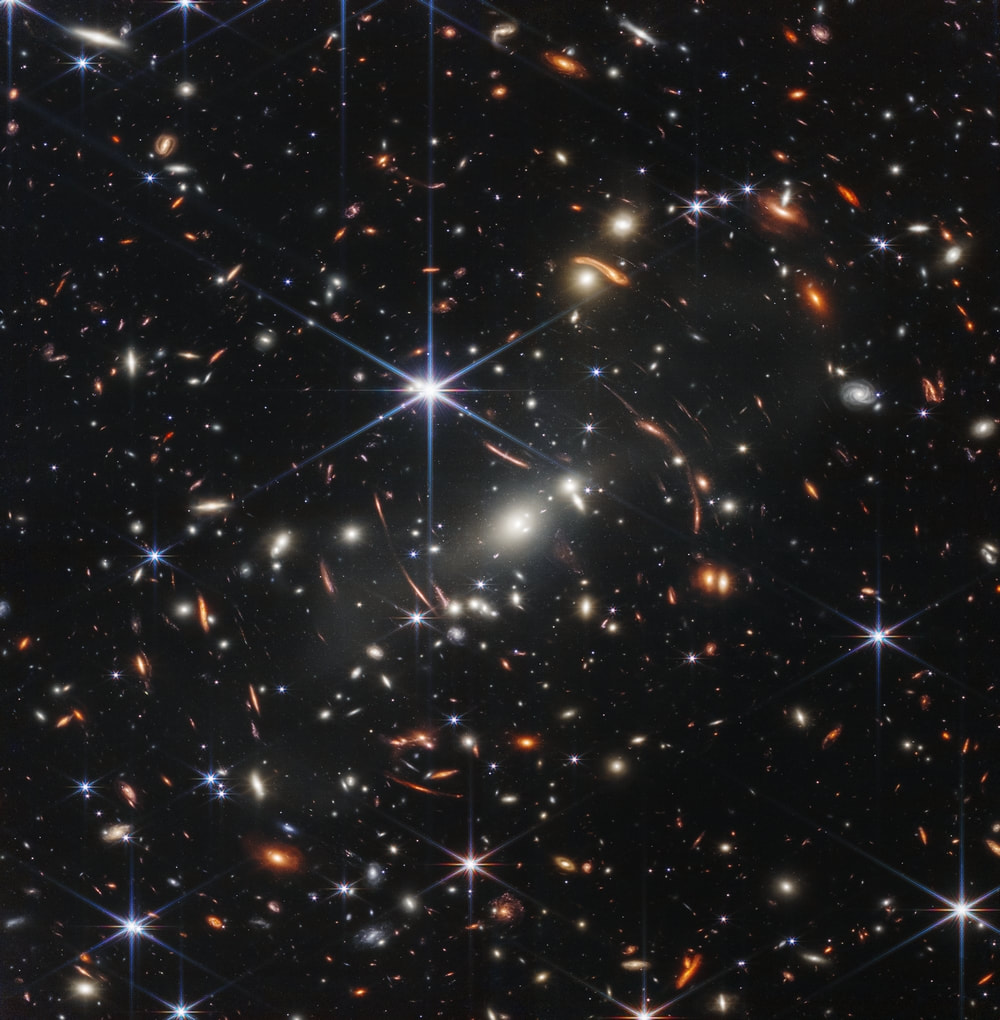|
The universe is big, but this is the mother of all understatements. There are really no words to describe how mind bogglingly huge the universe is. It is beyond mammoth, cyclopean, gargantuan, colossal, titanic, monumental, and Brobdingnagian all put together. How immensely ginormous and humongously gigantic and vast the universe is may well be beyond the ability of our minds to understand. Consider that unit of measurement, the mile. The moon is 238,900 miles away from Earth, and we regard placing a man on the moon as one of the greatest technological feats in the history of humanity. But astronomers don’t use miles to measure distances in the universe, they use light years. The distance light travels in one year, a light year, is 5.88 trillion miles. So by this token, placing a man on the moon, which is 1.25 light seconds away from the Earth, doesn’t sound very impressive. However, it gets worse (much worse). Pluto, the furthest planet (yes, I maintain it’s a planet!) is 5.5 light hours away from Earth. The NASA New Horizons probe travelling at 36,400 miles per hour took 9.5 years to reach Pluto! Another probe, the Voyager 1 probe, is the furthest object that humanity has sent into space. Voyager 1 was launched 45 years ago in 1977, and is currently travelling at 35,000 miles per hour. The probe has so far covered 14.5 billion miles, which is 21.6 light hours. To put in perspective this “achievement”, just consider that the nearest star to Earth, Alpha Centauri is 4.24 light years away! But it gets worse (much, much, worse). Our sun is one of the stars in a spiral galaxy called the Milky Way. The Milky Way has several arms, and our sun is located in a minor arm of the galaxy about 28,000 light years from the galactic center. Within 12.5 light years of our sun, there are 33 stars. Within 250 light years of our sun, there are 260,000 stars. And within 5,000 light years of our sun, there are 600 million stars. All in all, the Milky Way galaxy contains a total of 200 billion stars and as many planets, and is roughly 100,000 light years across. The Milky Way, in turn, is surrounded by a number of the so call “dwarf galaxies” that orbit around it within a distance of 500,000 light years. Each of these dwarf galaxies contain only a few tens of millions of stars and take billions of years to orbit the Milky Way. Did I mention it gets much worse (much, much, much, worse)? Galaxies associate themselves into groups of galaxies. The Milky Way is part of a group of galaxies called the Local Group which is made up of the Milky Way and two other large galaxies, Andromeda and the Triangulum galaxy, along with their entourage of dwarf galaxies. The Local Group of galaxies spans a distance of 5 million light years and encompasses 80 galaxies and 700 billion stars. But it gets…yes, you got it. Groups of galaxies tend to associate into clusters of galaxies which in turn associate into superclusters of galaxies. The Local Group of galaxies is part of the Virgo Supercluster of galaxies which contains 100 galaxy groups and clusters. The Virgo Supercluster has a diameter of 110 million light years and harbors 200 trillion individual stars. But…you know the drill. The Virgo Supercluster is but a minor lobe of an even greater supercluster of galaxies known as the Laniakea Supercluster which is made up of about 100 superclusters of galaxies containing 250,000 trillion stars and which stretches over 500 million light years. Superclusters of galaxies in turn associate gravitationally with each other to form the largest known structures in the universe which are variously called galaxy filaments, walls, or sheets. These walls, filaments, and sheets are separated from each other by large voids of space with few galaxies which gives the observable universe a honeycomb appearance. The Laniakea Supercluster forms part of a galaxy filament called the Pisces–Cetus Supercluster Complex. This galaxy filament stretches 1 billion light years across space. To get a feeling for its size, just consider that the Virgo Supercluster, which contains the Local Group of galaxies, which includes the Milky Way Galaxy, which is where our sun is, represents only 0.1% of the total mass of the Pisces–Cetus Supercluster Complex! And the Pisces–Cetus Supercluster Complex is but one filament among tens of thousands. Astronomers calculate that the universe visible from Earth is comprised of 10 million superclusters of galaxies, which are made up of 25 billion galaxy groups, which harbor 350 billion large galaxies and 7 trillion dwarf galaxies, which all together contain a total of 30 billion trillion stars! The James Webb Space Telescope has been able to peer further back into the dark abysses of spacetime than any other telescope before it. The photo below covers an area of the universe equivalent to the area occupied by a grain of sand held at an arm’s length. There are galaxies here that are billions of light years away with the furthest one being a staggering 13.5 billion light years away. And even in this photograph there are faint smudges in the background that probably represent galaxies that cannot be resolved by the optics of the telescope! There are simply no units of measure or descriptors of size in our language that can help the human mind to comprehend the size of the universe. I think that in order to truly be able to grasp the sheer enormous immensity of the universe, we first have to lose our minds. So I will settle for crazy. The universe is crazy big! The image of galaxy cluster SMACS 0723 is by NASA and the Space Telescope Science Institute (STScI), and is in the public domain.
2 Comments
|
Details
Categories
All
Archives
June 2024
|

 RSS Feed
RSS Feed